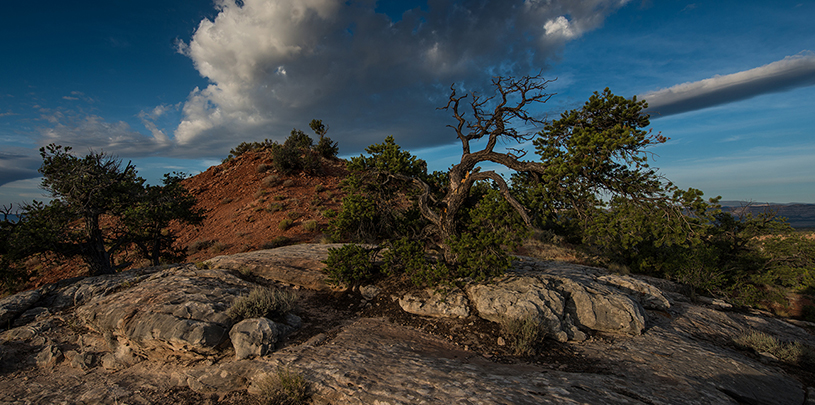
 by Mary O’Brien, Utah Forests Director
by Mary O’Brien, Utah Forests Director
One day last summer, in a remote spot in Grand Staircase-Escalante National Monument, I saw petrified logs so perfectly preserved they looked like they could burn in a fireplace that night. An hour later I was looking at living biological soil crust growing next to 80 million-year-old, petrified, biological soil crust.
Deep time like this is one thing to be excited about in Grand Staircase. What’s your connection to the monument?
Due to unremitting pressure from Utah’s congressional delegation, the 1.8 million-acre Grand Staircase-Escalante National Monument is one of the two monuments (along with Bears Ears National Monument) that are central targets of Interior Secretary Ryan Zinke’s review of 27 monuments for which public comments are due July 10. Secretary Zinke is asking you to comment on whether to shrink, erase — or maybe, as an alternative, keep and treasure — Grand Staircase-Escalante National Monument.
Perhaps you have already sent comments in for Bears Ears during its first public comment period or plan to submit your thoughts during the extended comment period that ends July 10.
Now, please write in support of Grand Staircase-Escalante National Monument ›
Utah’s congressional delegation and some local county commissioners in southern Utah have never stopped being mad at President Bill Clinton for establishing this monument in 1996 because of the coal deposits on the Kaiparowits Plateau. Twenty-one years later, after 15 new dinosaur species have been discovered where that coal thankfully remains sequestered, they want Secretary Zinke and President Trump to kick that monument off the map — or shrink it.
You would think that, by now, Grand Staircase-National Monument would be safe. But it isn’t. Please comment before July 10.
A brief, personalized comment is perfect and can be just as important as a long, persuasive document. Remember to keep your comments positive and appeal to the wisdom of protecting this large, world-renowned, and wild monument. Here is an outline of how you might approach your comments:
The Antiquities Act encourages presidents to designate monuments for their “historic landmarks, historic and prehistoric structures, [or] other objects of historic or scientific interest.” Grand Staircase-Escalante National Monument has been called the “science monument” because of its dinosaurs, its grand staircase of geological revelations, and its diverse communities of plants and wildlife that are adapted to the desert, canyons, and plateaus. All that “aha!” science requires big spaces.
Shortly after designation of the monument, Congress approved slight adjustments to the boundaries, thereby firmly establishing current boundaries. In other words, it wasn’t just Clinton who set the boundaries of Grand Staircase-Escalante National Monument.
Due to the monument’s remoteness, huge trucking costs, and lack of market, Andalex Corporation, which could have dug coal after the monument was established, was happy to have the federal government buy out their leases for $14 million.
Utah’s school children have also benefited economically from trading state lands out of the monument for more productive hydrocarbon lands in northeast Utah.
Kanab, Escalante, and Boulder businesses and communities are thriving from the ever-increasing regional, national, and worldwide visitation the monument generates through its deep time, big spaces, narrow canyons, and diverse discoveries.
Submit your comments to the Department of the Interior online ›
Or, if you’re pressed for time, customize your message here and we can send your comments to Secretary Zinke through our platform.
Proposal to build massive communications tower on state lands inside Bears Ears National Monument withdrawn
Read MoreThe Navajo Nation and communities along the haul route oppose uranium transport from Grand Canyon region mine.
Read MoreDeveloper's attempt to dam a canyon near the confluence of the Colorado and Little Colorado rivers halted.
Read More